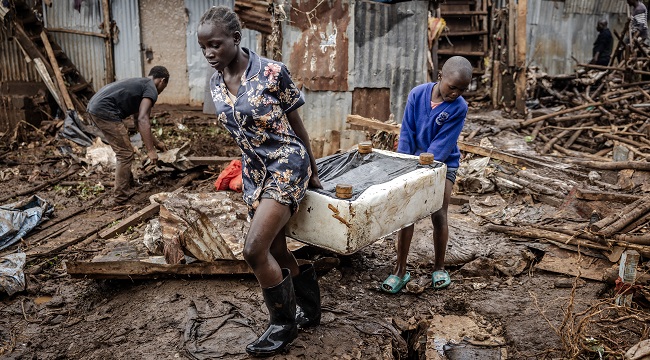Kenya has reported that the death toll from weeks of devastating rains and floods had risen to 288, with no signs of relief from the crisis in sight. Nairobi’s government warned of continued torrential downpours, posing the risk of further floods and landslides.
In western Kenya, the River Nyando overflowed early Sunday, submerging a police station, school, hospital, and market in Ahero town, Kisumu County, according to local police. Although there were no immediate reports of casualties, water levels continued to rise, with the main bridge on the highway to Nairobi submerged.
Weeks of unusually heavy seasonal rains, exacerbated by the El Nino weather pattern, have caused chaos in many parts of East Africa, a region highly susceptible to climate change. The floods and mudslides have claimed over 400 lives and displaced several hundred thousand people across multiple countries, damaging houses, roads, and bridges.

“It’s a serious situation, and we should not take it lightly,” remarked Kenyan government spokesman Isaac Mwaura during a crisis briefing on Sunday.
Across the border in Tanzania, the Meteorological Authority announced that Tropical Cyclone Hidaya, which had threatened to worsen the situation, had significantly weakened after hitting Mafia Island on Saturday. The authority confirmed that there was no longer a threat from the cyclone in the country.
Despite the weakening of the cyclone, Mwaura cautioned that strong winds and waves hit the coast of Kenya, with heavy rains expected to intensify from later Sunday. One fisherman had died, and another was reported missing.
In Kenya, the disaster has claimed 228 lives since March, with 72 individuals still missing, according to government figures. Over 212,000 people have been displaced, with many evacuated either forcibly or voluntarily.
The government has issued evacuation orders for individuals living near major rivers or dams, warning of the risk of overflow. Mwaura also highlighted the threat of waterborne diseases, including a reported case of cholera and incidents of diarrhoea.
Jagan Chapagain, head of the International Federation of Red Cross and Red Crescent Societies (IFRC), expressed serious concerns about a wider humanitarian crisis due to the forecasts of more rains.
Critics have accused the Kenyan government of being ill-prepared and slow to respond to the crisis, despite weather warnings. The main opposition party has called for declaring the situation a national disaster.
President William Ruto acknowledged the dire weather conditions in a national address on Friday, attributing the calamitous cycle of droughts and floods to a failure to protect the environment.
The deadliest incident in Kenya occurred when a dam burst near Mai Mahiu in the Rift Valley, claiming 58 lives. Rescuers are also searching for 13 people missing after a boat capsized in Tana River County, resulting in seven fatalities.


